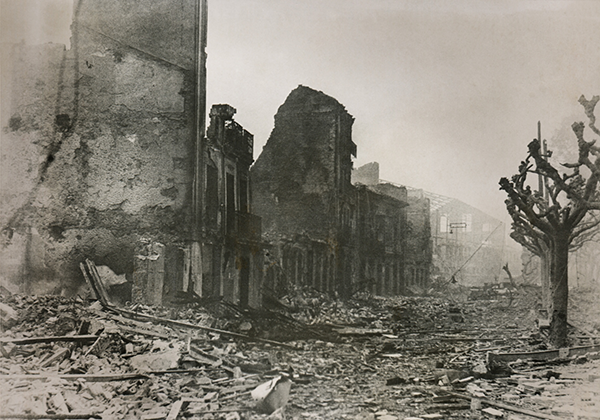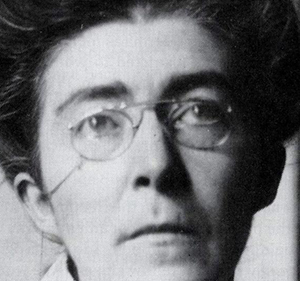‘Hypothetical bombing of a small town’—Guernica, 1937
Published in 20th-century / Contemporary History, Features, Issue 4 (July/August 2017), Volume 25Fact and fiction in contemporary Irish newspapers.
By William Burton
This year marks the 80th anniversary of the attack on Guernica on 26 April 1937 by the German Condor Legion. The attack—the first large-scale air raid in human history—was virtually ignored by rural newspapers but heavily reported on in editorials and reports in national and urban newspapers. Estimates vary, but up to 2,000 civilians were killed in a town that was not a military target. Guernica was not on the front line and the objective could only have been to destroy the centre of the Basque people who supported the Spanish Republic, although this is disputed. How was it reported in Ireland?
Irish Times
The Irish Time’s coverage of Guernica was markedly different from other national papers. The initial reporting of the attack came on 28 April 1937 under the headline ‘Destruction of Guernica—President Accuses German Airmen’, and accurately reported what occurred. The report was by Christopher Holme, a journalist from Reuters. Holmes, along with Noel Monks of the Daily Express and Steer, was in Bilbao when word was received about the attack. Holmes is credited, along with Monks and Steer, with producing accurate reports that allowed the truth to surface in the aftermath of the bombing and a relentless counter-information campaign by Luis Bolin, Franco’s press chief.
Irish Press
The Irish Press first published an account of the attack on 28 April. It differed from the Irish Times in its headline and its source, producing by far the most dramatic headline of the national dailies: ‘800 Killed in History’s Biggest Air Raid—Basque City Destroyed’:
‘Every hour brings fresh reports of the terrible fate that was meted out to the city by the airmen, who, Señor Aguirre, the 34-years-old President of the Basque Republic, claims, were Germans.’
The paper was unequivocal: the city was bombed from the air. The Press published graphic details of the actual attack, unlike the Irish Times, which placed emphasis on the destruction and chaos at the centre of its piece:
‘From the first planes the crews leaned out dropping hand grenades while the frightened populace rushed to a few bomb-shelters. Hundreds raced desperately for the fields where they were machine-gunned from the air by swooping fighters. Next relays of bombers dropped high explosive bombs, of which it is estimated that over a thousand hit the town. Incendiary bombs followed.’
On 1 and 7 May, the Irish Press published two articles concerned with the Friends of the Spanish Republic. No other newspaper published details of their statements or reports of their meetings. On 1 May the Guernica attack was roundly condemned at one of their meetings in Hatch Street Hall, Dublin. Speakers included wounded Irish members of the International Brigades, including Frank Ryan, William Scott and Donal O’Reilly. The meeting was presided over by Mrs H. Sheehy Skeffington, and the article concluded with a rallying call for Irish workers to ‘join forces in a common fight against the agents of Fascist Imperialism’. The report’s inclusion suggested that the Irish Times was not alone in publishing ‘non-Catholic’ articles; the Press also published articles that had the potential to upset the Catholic hierarchy. Moreover, the articles suggested that, despite the overarching Catholic influence in Ireland, there was a movement that was not influenced by the Catholic Church and was able to gather and fund-raise with the acquiescence of a national newspaper.
Provincial press
Outside large urban centres such as Dublin and Cork, the provincial press largely took the approach that an attack on Franco was an affront to Catholicism. The only mention in the Derry People came three weeks after the event. There was nothing to indicate that an atrocity by German pilots had taken place against the Basque town. When the Derry People did report the bombing of Guernica, the town was only named in an editorial that saved its fury for Britain’s ‘hypocrisy’ over the incident. The British call for Spain to abstain from aerial bombardment preceded news that large-scale operations were proceeding against the Indian tribesmen and that a British ‘punitive force’ of 30,000 was ‘making steady headway’. The editorial, titled ‘The British Way’, which also appeared in the Strabane Chronicle, accused the British government of sheer hypocrisy for suggesting the need for both sides to stop aerial bombardment on the very day they themselves attacked Indian tribesmen:
‘In India it is not fortified towns like Malaga and San Sebastian or centres such as Guernica and Eibar that are the object of aerial attack, but isolated dwellings of sticks and straw. Britain’s fresh pose of anxiety for the welfare and security of non-combatants cannot be sustained in light of the operations going on along the Indian frontier.’
The editorial was correct; the Royal Air Force had eight squadrons that rotated in Waziristan, India, and had honed its skills on the tribesmen of Iraq and India during the 1920s and 1930s. The Indian tribes’ skills in attacking aircraft and evading aerial attack had also been honed, however, unlike defenceless Guernica.

Above: Guernica after its destruction by the German Luftwaffe’s Condor Legion on 26 April 1937. (shutterstock)
Irish Rosary
Like the provincial press, the Irish Rosary, a monthly publication by the Dominican Fathers, did not report the attack on Guernica. It published numerous editorials throughout the civil war but never mentioned the word Guernica. In the June edition, under the title ‘Sword in Hand!’, the editorial argued that to defeat an enemy occasionally requires one to strike first when your adversary is weak rather than to wait:
‘Anybody with any mind can see that it is sometimes necessary to hit out at an adversary before that adversary can hurt you. For it may be no use to hit out after he has hurt you; especially after he has mortally hurt you. Thus, one can see why the Patriots of Spain found it necessary to hit out at Soviet adversaries, before these adversaries could hurt religion and nationality mortally in Spain, as they did in Mexico and Russia.’

Above: Hannah Sheehy Skeffington—chaired a meeting of Friends of the Spanish Republic in Hatch Street Hall, Dublin, on 1 May, which roundly condemned the bombing of Guernica.
‘The high explosives of Catholic truth and Catholic reasoning are infinitely more effective, far higher and much more explosive, when brought into action.’
While not explicitly stated, the over-use of the term ‘high explosives’ and the chilling implication of the italics, ‘when brought into action’, can only have referred to Guernica.
William Burton is a Ph.D student at the University of Ulster.
















